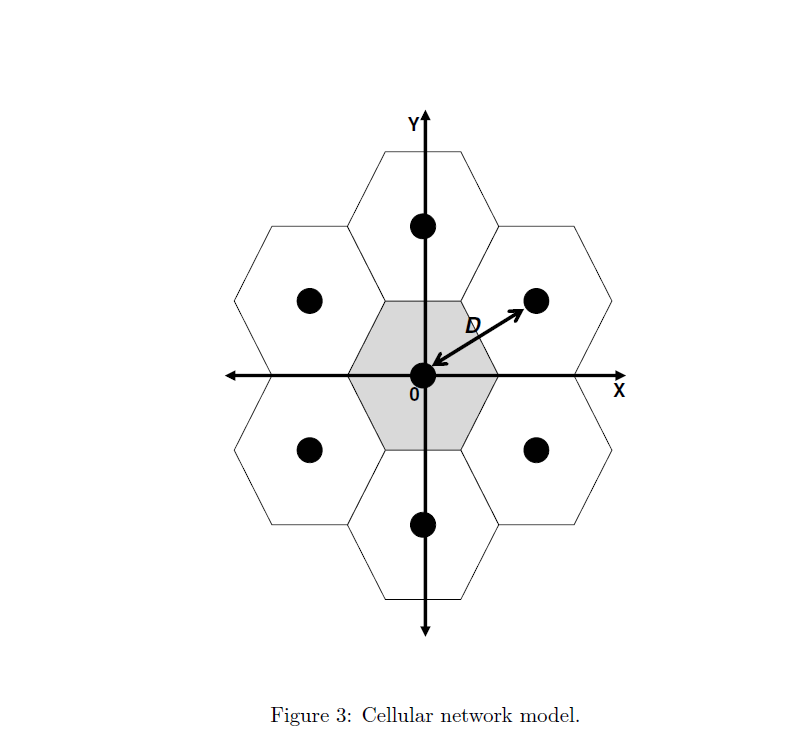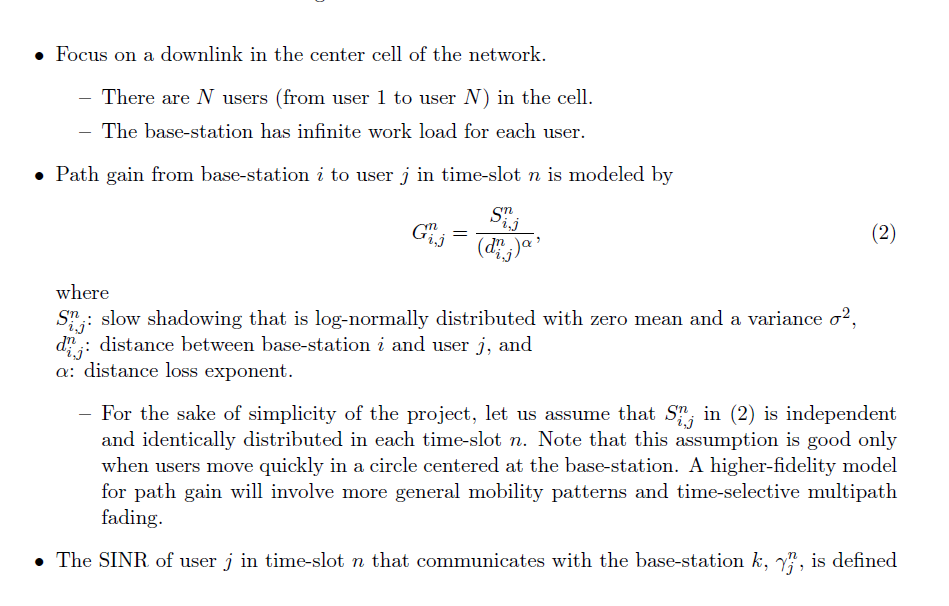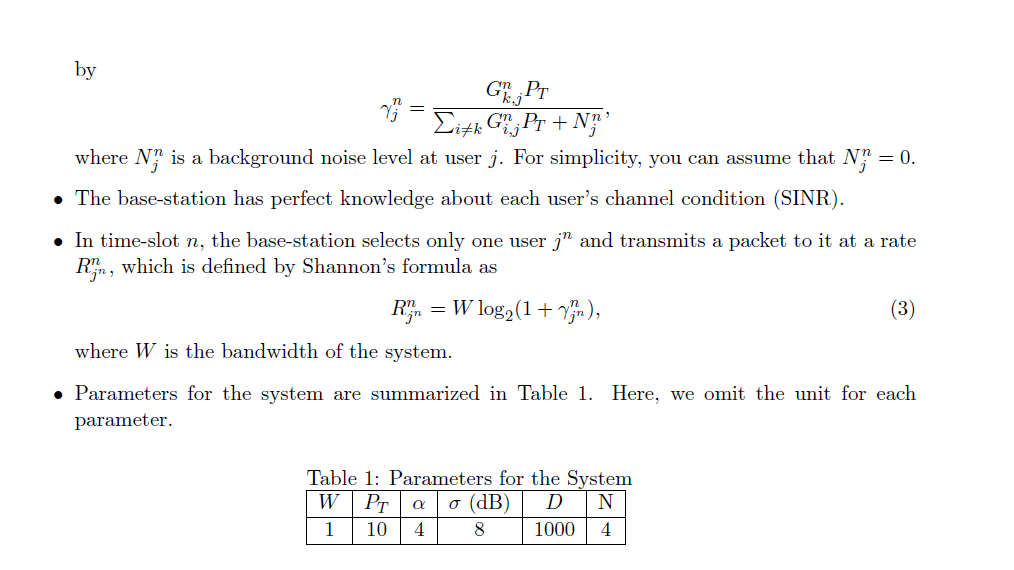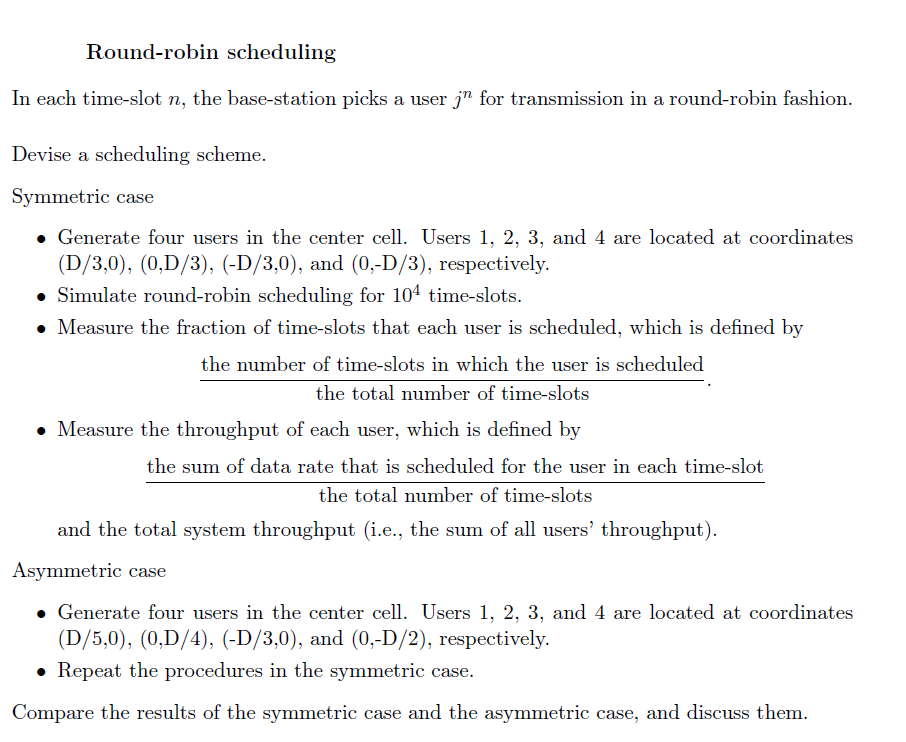




- Consider a cellular network in Figure 3. - A base-station is located at the center of each cell. - Distance between base-stations is D. - We will be interested in the center-cell and take the power from other cells as interference. - The system is time-slotted. - Each base-station transmits at the power level PT. Figure 3: Cellular network model. - Focus on a downlink in the center cell of the network. - There are N users (from user 1 to user N ) in the cell. - The base-station has infinite work load for each user. - Path gain from base-station i to user j in time-slot n is modeled by Gi,jn=(di,jn)Si,jn, where Si,jn : slow shadowing that is log-normally distributed with zero mean and a variance 2, di,jn : distance between base-station i and user j, and : distance loss exponent. - For the sake of simplicity of the project, let us assume that Si,jn in (2) is independent and identically distributed in each time-slot n. Note that this assumption is good only when users move quickly in a circle centered at the base-station. A higher-fidelity model for path gain will involve more general mobility patterns and time-selective multipath fading. - The SINR of user j in time-slot n that communicates with the base-station k,jn, is defined by jn=i=kGi,jnPT+NjnGk,jnPT, where Njn is a background noise level at user j. For simplicity, you can assume that Njn=0. - The base-station has perfect knowledge about each user's channel condition (SINR). - In time-slot n, the base-station selects only one user jn and transmits a packet to it at a rate Rjnn, which is defined by Shannon's formula as Rjnn=Wlog2(1+jnn), where W is the bandwidth of the system. - Parameters for the system are summarized in Table 1. Here, we omit the unit for each parameter. Table 1: Parameters for the Svstem Round-robin scheduling In each time-slot n, the base-station picks a user jn for transmission in a round-robin fashion. Devise a scheduling scheme. Symmetric case - Generate four users in the center cell. Users 1, 2, 3, and 4 are located at coordinates (D/3,0),(0,D/3),(D/3,0), and (0,D/3), respectively. - Simulate round-robin scheduling for 104 time-slots. - Measure the fraction of time-slots that each user is scheduled, which is defined by the number of time-slots in which the user is scheduled the total number of time-slots - Measure the throughput of each user, which is defined by the sum of data rate that is scheduled for the user in each time-slot the total number of time-slots and the total system throughput (i.e., the sum of all users' throughput). Asymmetric case - Generate four users in the center cell. Users 1, 2, 3, and 4 are located at coordinates (D/5,0),(0,D/4),(D/3,0), and (0,D/2), respectively. - Repeat the procedures in the symmetric case. Compare the results of the symmetric case and the asymmetric case, and discuss them











